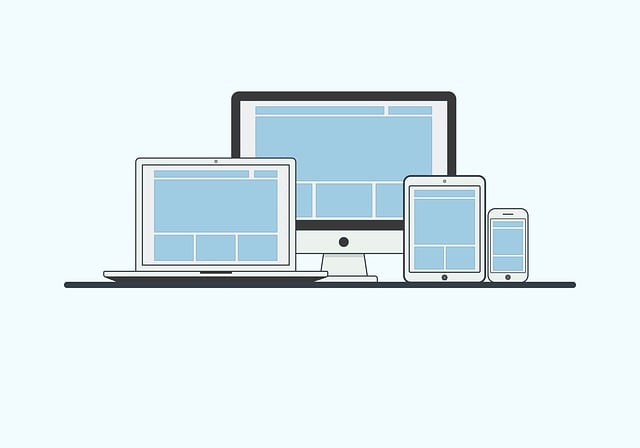In today's digital era, a robust website is crucial for business success. Current web design trends prioritize user experience (UX) with responsive designs, minimalism, and fast loading times. These innovations enhance engagement, drive conversions, and foster brand loyalty globally. Staying ahead of these trends is key to making a strong online impression and attracting a wider audience.
An impressive business website is your key to thriving in the digital age. Acting as your brand’s virtual storefront, it’s open 24/7 to over 3 billion global internet users. First impressions are crucial; a powerful site can significantly impact your marketing efforts and convert visitors into customers. This article explores how budget-friendly web design investments can provide long-term value through enhanced user experiences, global reach, and adherence to current web design trends. Discover why prioritizing your website is essential for success in today’s competitive online landscape.
- Website as Business Face: First Impressions Matter
- Global Reach: Your Digital Storefront
- 24/7 Accessibility: The Modern Advantage
- Impact of a Powerful Website on Marketing
- Budgeting for Success: Prioritizing Web Design
- Current Web Design Trends: Staying Ahead
- User Experience: Crafting a Seamless Journey
- Converting Visitors into Customers Online
- Long-Term Value: A Dynamic Online Presence
Website as Business Face: First Impressions Matter

In today’s digital age, a website is no longer just an online brochure; it serves as the face of your business in the virtual world. The first impression a user forms of your brand largely depends on the quality and design of your website. With millions of websites vying for attention, a stunning and modern web design can set you apart from competitors, instantly attracting and engaging potential customers. Current web design trends focus heavily on creating visually appealing interfaces that adapt seamlessly to various devices, ensuring an optimal user experience regardless of whether they’re on a desktop or mobile.
Responsive Web Design Trends and User Experience (UX) Web Design Trends are at the forefront of this evolution. A responsive design guarantees your website adjusts gracefully to different screen sizes, providing consistent performance across all platforms. This is crucial for maintaining user engagement while adhering to SEO-Friendly Web Design Trends that prioritize search engine rankings. First impressions are vital in driving conversions and fostering brand loyalty, making a well-crafted website an invaluable asset for any business aiming to thrive online.
Global Reach: Your Digital Storefront

In today’s interconnected world, a business website isn’t just a digital brochure; it’s your global storefront, accessible to anyone with an internet connection. This reach extends far beyond geographical borders, connecting you directly with potential customers from every corner of the earth. The current web design trends prioritize mobile web design trends, ensuring your site looks impeccable on various devices, from smartphones to tablets and desktops. Modern web design solutions not only enhance visual appeal but also focus on improving user experience (UX) trends. By keeping up with these evolving designs, you can ensure that your brand stays relevant and attractive in a competitive online market.
With over 3 billion internet users globally, the potential for growth is immense. A well-designed website, incorporating the latest web design and user experience trends, can significantly increase engagement and conversions. By investing in your digital storefront, you’re not just building an online presence; you’re establishing a powerful marketing tool that can drive business success on a global scale.
24/7 Accessibility: The Modern Advantage

In today’s fast-paced digital world, a website that offers 24/7 accessibility is no longer a luxury but an expected standard. Unlike traditional brick-and-mortar stores with limited operating hours, an online business location never sleeps. This round-the-clock availability provides a significant advantage to companies in the modern era. With over 3 billion internet users globally, businesses can reach their target audience at any given moment, creating a continuous opportunity for engagement and sales.
The current web design trends heavily emphasize responsive design, ensuring that websites adapt seamlessly to various devices and screen sizes. This is crucial for maintaining a strong online presence, as users now access the internet through smartphones, tablets, and desktops equally. Popular web design features like interactive elements and user-friendly interfaces further enhance the user experience, encouraging visitors to explore and engage with the brand. Interactive web design trends, such as animated graphics and dynamic content, can significantly impact a company’s online success by keeping users interested and invested in the brand.
Impact of a Powerful Website on Marketing

A powerful website is no longer a luxury but a necessity for any business aiming to thrive in today’s digital landscape. Its impact on marketing efforts cannot be overstated, as it serves as the primary touchpoint between your brand and potential customers. With current web design trends leaning towards minimalist and clean aesthetics, businesses can effectively communicate their value proposition while ensuring a seamless user experience. Popular Web Design Features like responsive designs, fast loading times, and intuitive navigation have become standards, allowing brands to capture and retain audience attention.
Moreover, Current Web Design Innovations such as interactive elements, video backgrounds, and animated transitions not only enhance visual appeal but also facilitate engagement. These features enable businesses to tell compelling stories, showcase their products or services in action, and ultimately drive conversions. Investing in a robust website is a strategic move that can significantly boost your online presence, attract a broader audience, and translate into tangible business growth.
Budgeting for Success: Prioritizing Web Design

In today’s digital age, a well-designed website is more than just an online brochure; it’s a powerful tool for business growth and customer engagement. Budgeting for web design should be approached strategically, recognizing its potential to drive sales, enhance brand visibility, and create a competitive edge. With the ever-evolving current web design trends, investing in innovative ideas can significantly impact your online presence. From minimalism and mobile optimization to immersive experiences powered by AR/VR technologies, staying abreast of Web Design Trends for 2024 is essential.
Prioritizing web design involves understanding that it’s not just about aesthetics but also User Experience (UX)—a key factor in retaining visitors and converting them into customers. By incorporating modern trends like responsive design, intuitive navigation, and fast loading times, you can create a seamless digital journey for your audience. These Innovative Web Design Ideas not only elevate the look and feel of your website but also ensure it keeps up with the expectations of modern internet users, ultimately contributing to the success of your online business.
Current Web Design Trends: Staying Ahead

In today’s digital landscape, staying ahead of the curve with the latest current web design trends is paramount for businesses to make a strong online impression and engage their target audience effectively. The user experience (UX) has become a cornerstone of successful web design, focusing on intuitive navigation, fast loading times, and responsive layouts that cater to various devices. Minimalist web design trends have also gained traction, emphasizing clean lines, simple typography, and uncluttered spaces to enhance readability and create a serene browsing environment.
Color trends in web design play a vital role in setting the mood and evoking emotions from users. Soft, pastel hues and earthy tones are currently popular choices, adding warmth and subtlety to websites. By combining these current web design trends with thoughtful content strategies, businesses can ensure their online presence stands out while providing an inviting and user-friendly experience for visitors.
User Experience: Crafting a Seamless Journey

In today’s digital age, a user-centric approach is paramount for any successful online venture. Crafting an exceptional User Experience (UX) means creating a seamless journey that guides visitors through your website with ease and efficiency. The current web design trends prioritize intuitive navigation, quick loading times, and responsive layouts, ensuring your site adapts to various devices and screen sizes. By focusing on these aspects, you not only enhance user satisfaction but also improve search engine optimization (SEO) rankings, making your website more visible and attractive to potential customers.
Visual Design Trends for Websites play a significant role in achieving this seamless experience. Minimalist Web Design Trends, characterized by clean lines and uncluttered layouts, have gained immense popularity due to their ability to highlight content effectively while reducing cognitive load. Additionally, Responsive Web Design Trends, which adapt the site’s layout and design based on user behavior and environment, ensure a consistent experience across all platforms. These trends not only make your website more accessible but also contribute to a stronger brand identity, fostering a deeper connection with your audience.
Converting Visitors into Customers Online

In today’s digital age, converting visitors into customers online is more accessible than ever, thanks to innovative web design trends like Responsive Web Design Trends that ensure your site seamlessly adapts to any device or screen size. Mobile Web Design Trends have also become paramount, given the vast number of users accessing the internet via smartphones and tablets. By keeping up with these current web design trends, businesses can create a seamless user experience, encouraging visitors to engage, browse, and ultimately make a purchase.
Minimalist Web Design Trends further enhance this conversion by simplifying interfaces, reducing cognitive load, and allowing users to focus on what matters most: the product or service being offered. Clean layouts, clear calls-to-action, and uncluttered designs not only appeal to modern audiences but also improve loading times, contributing to a better user experience that fosters customer loyalty and drives conversions.
Long-Term Value: A Dynamic Online Presence

A dynamic online presence offers unparalleled long-term value to businesses in today’s digital landscape. With a well-crafted and regularly updated website, companies can maintain a strong and consistent brand image, regardless of geographical boundaries. The current web design trends prioritize minimalist designs that not only capture attention but also enhance user experience, making navigation intuitive and engaging. This aligns with the evolving expectations of internet users who seek simplicity, speed, and aesthetic appeal.
By embracing visual design trends for websites that emphasize clean lines, ample white space, and high-quality visuals, businesses can create a seamless digital experience. Implementing web design best practices ensures that the website not only looks modern but also performs efficiently on various devices and browsers. This adaptability is crucial given that over 50% of internet traffic now comes from mobile devices. A dynamic online presence, facilitated by a top-tier website, allows businesses to reach, engage, and convert potential customers at a scale that traditional marketing methods can only dream of, solidifying their position in the digital market for years to come.
